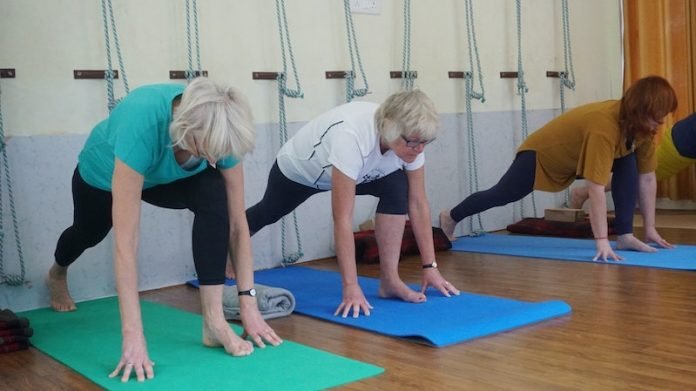
According to the National Osteoporosis Foundation, an estimated 10 million people in the United States have osteoporosis, a disease that causes weak, thinning bones.
In recognition of Osteoporosis Awareness Month, Cedars-Sinai Newsroom sat down with Kathleen Breda, MSN, orthopaedic nurse practitioner and manager of the Geriatric Fracture Program at Cedars-Sinai, to share recommendations on how to detect, treat and prevent osteoporosis.
What is osteoporosis?
Breda: Osteoporosis literally means porous bones, which means something that is full of holes. Osteoporosis is a disease that we don’t feel, but it weakens bones, making them more likely to break or fracture.
Who is at risk of developing osteoporosis?
Breda: One in two women over the age of 50, and one in four men over the age of 50, will develop osteoporosis, but the disease can affect people of any age.
There are several reasons why people develop osteoporosis, In women, it has a lot to do with the lack of estrogen after menopause.
In men, it can be related to other illnesses or low testosterone. And in all sexes, it has a lot to do with habits such as whether you smoke, drink heavily or exercise.
Medication also can be a factor in developing osteoporosis, as it may contribute to an increase of bone loss.
Some people are genetically predisposed to osteoporosis, which is why it’s important to know your family history.
Is osteoporosis preventable?
Breda: In some cases, it is. The key is trying to reduce the risk of osteoporosis, which can lead to potentially deadly falls, particularly among older individuals whose health might be compromised by other conditions.
A few good first steps are to:
Eat a diet rich in calcium (sardines, dairy products, broccoli), which strengthens bones, and take vitamin D (contained in foods such as salmon, milk and yogurt), which gets calcium to the bones.
Avoid smoking and limit alcohol consumption to one drink a day.
Exercise regularly doing weight-bearing activities, such as lifting weights, to build core and leg muscles.
Not everybody develops osteoporosis, but you are never too old or young to take care of your bones.
How can you tell if you have osteoporosis?
Breda: Poor bone quality can be surprising, it’s a silent disease.
The only way that you can know if you have osteoporosis is to talk with your primary care physician, have the doctor evaluate you and have him or her order a bone density scan, the gold standard for determining bone quality.
Based on those results, you can make some good decisions about what you can do to prevent fractures.
If you care about bone health, please read studies about middle-aged men need to know this bone disease and findings of 5 foods that could make your bones and joints strong.
For more information about bone disease prevention and treatment, please see recent studies about this common household chemical may harm your bone health and results showing that common drugs for bone health may help people live longer.



